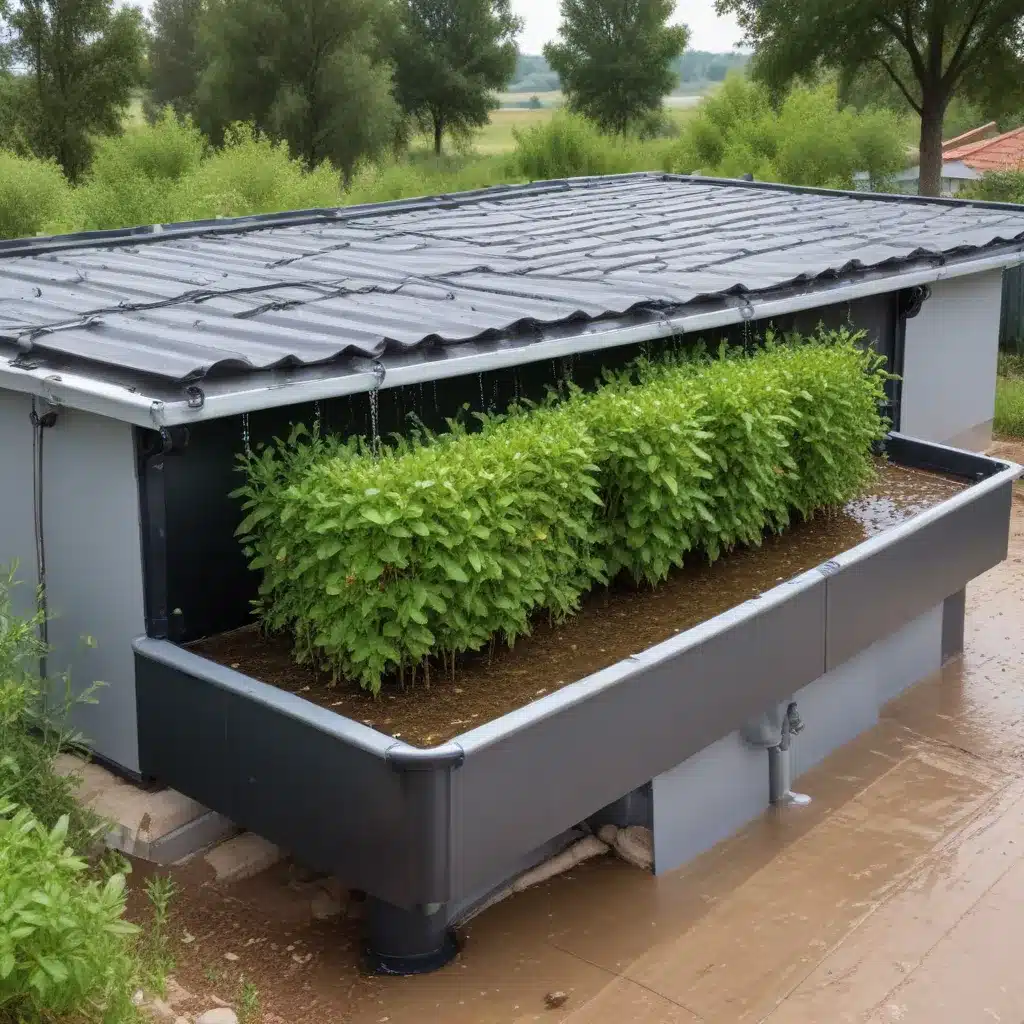
In the face of global water scarcity and environmental challenges, roofing professionals have a crucial role to play in driving sustainable water management solutions. One innovative approach that is gaining increasing attention is the integration of rainwater harvesting systems into roof designs. This article will delve into the advancements, benefits, and practical considerations of these roof-integrated rainwater harvesting systems, offering valuable insights for roofers in Northampton and beyond.
The Growing Importance of Rainwater Harvesting
As the world grapples with the impacts of climate change and population growth, the demand for freshwater resources is rapidly outpacing supply. Traditional water management practices are no longer sufficient, and innovative solutions are needed to ensure long-term water security. Rainwater harvesting has emerged as a promising strategy to address this challenge, particularly in urban and rural areas where conventional water infrastructure may be lacking.
Roof-integrated rainwater harvesting systems leverage the large surface area of buildings to capture, collect, and store rainfall for diverse non-potable applications, such as landscape irrigation, vehicle washing, and toilet flushing. These systems not only reduce the strain on municipal water supplies but also contribute to stormwater management, mitigating the risk of urban flooding and related environmental issues.
Advancements in Roof-Integrated Rainwater Harvesting Systems
Technological advancements have significantly improved the efficiency, reliability, and cost-effectiveness of roof-integrated rainwater harvesting systems. Some of the key innovations include:
Improved Collection and Storage Techniques
Novel roof designs and guttering systems have enhanced the collection efficiency of rainwater, ensuring minimal losses during the capture process. Advanced storage solutions, such as modular and underground tanks, have increased the storage capacity and reduced the spatial footprint of the systems.
Enhanced Water Treatment and Purification
Integrated water filtration and disinfection technologies have made it possible to treat harvested rainwater to potable standards, expanding the range of applications beyond non-potable uses. These advancements have opened up the potential for rainwater to supplement or even replace municipal water supplies in some cases.
Integrated Monitoring and Control Systems
Sophisticated monitoring and control systems allow for real-time tracking of water usage, storage levels, and system performance. This data-driven approach enables optimized system operation, predictive maintenance, and responsive adjustments to changing weather patterns and water demands.
Renewable Energy Integration
The integration of renewable energy sources, such as solar photovoltaic systems, with rainwater harvesting has created hybrid solutions that are both environmentally friendly and energy-efficient. These integrated systems can reduce the reliance on grid-supplied electricity, further enhancing the sustainability of the overall solution.
Benefits of Roof-Integrated Rainwater Harvesting
The adoption of roof-integrated rainwater harvesting systems offers a multitude of benefits, making them an increasingly attractive option for both residential and commercial buildings:
Water Conservation and Efficiency
By reducing the demand for municipal water, these systems contribute to the conservation of finite freshwater resources. Homeowners and businesses can significantly lower their water bills and reduce their environmental footprint.
Stormwater Management and Flood Mitigation
Roof-integrated rainwater harvesting systems have the potential to alleviate urban flooding by capturing and storing excess stormwater runoff. This can help mitigate the impact of extreme weather events and reduce the strain on local drainage infrastructure.
Increased Resilience and Climate Adaptation
As water scarcity and extreme weather events become more prevalent, roof-integrated rainwater harvesting systems can enhance the resilience of buildings and communities. These systems can provide a reliable alternative water source, ensuring continued access to water even during periods of drought or disruption to municipal supplies.
Economic Benefits and Cost Savings
While the initial investment in a roof-integrated rainwater harvesting system may be higher, the long-term cost savings from reduced water bills and potential government incentives can make these systems financially viable. Furthermore, the increased property value and potential for rental or resale premiums can further enhance the economic benefits.
Practical Considerations for Roofers
As roofers in Northampton explore the integration of rainwater harvesting systems, there are several practical considerations to keep in mind:
Roof Design and Structural Integrity
The roof design must be optimized to efficiently capture and channel rainwater into the harvesting system. Roofers should assess the structural capacity of the building to ensure that the additional weight of the storage tank and associated components can be safely supported.
System Integration and Compatibility
Careful planning is required to seamlessly integrate the rainwater harvesting system with the building’s plumbing, electrical, and drainage infrastructure. Roofers should work closely with water management specialists to ensure the system’s compatibility and efficient operation.
Maintenance and Longevity
Proper maintenance of the roof-integrated rainwater harvesting system is crucial to ensure its long-term performance and reliability. Roofers should provide guidance on regular inspections, filter replacements, and other preventive maintenance tasks to their clients.
Compliance with Local Regulations
Roofers must be familiar with the relevant local regulations and building codes that govern the installation and use of roof-integrated rainwater harvesting systems. This includes understanding any requirements for permits, water quality standards, and connections to municipal water supplies.
By addressing these practical considerations and leveraging the advancements in roof-integrated rainwater harvesting technology, roofers in Northampton can position themselves as leaders in sustainable water management solutions. Partnering with homeowners and businesses to integrate these innovative systems can not only contribute to environmental conservation but also provide a competitive edge in the local roofing market.
Conclusion
As the demand for sustainable water management solutions continues to grow, roof-integrated rainwater harvesting systems have emerged as a transformative technology. By capturing, storing, and utilizing rainwater, these systems offer a multitude of benefits, including water conservation, stormwater management, and enhanced climate resilience. Roofers in Northampton who embrace this innovative approach can not only differentiate themselves in the market but also play a crucial role in addressing the global water crisis and promoting a more sustainable future.
To learn more about how Roofers in Northampton can integrate rainwater harvesting systems into their services, please visit our website or contact us directly. Our team of experienced professionals is dedicated to providing tailored solutions that meet the unique needs of our clients and contribute to the broader goal of environmental sustainability.

